Strength training builds muscle, protects bone health, boosts brain function, and extends lifespan. Research confirms that resistance exercise is not just about getting stronger—it’s one of the most effective ways to improve long-term health and well-being.

Why does this matter? Because unlike cardio alone, strength training creates lasting structural changes in your body. It improves your metabolism, protects you from chronic diseases, and even strengthens your brain as you age.
In this guide, you’ll learn 12 evidence-based benefits of strength training, how they impact your life, and what the latest science says about why everyone—from beginners to older adults—should be lifting.
12 Evidence-Based Benefits of Strength Training
Strength training is more than just building muscle—it protects your health, boosts energy, and improves daily life. Backed by science, here are 12 proven benefits you gain from resistance exercise:
1. Prevents Age-Related Muscle Loss

As early as age 30, people begin losing 3–8% of lean muscle per decade, a process called sarcopenia (National Library of Medicine ).
- Strength training is the most effective intervention to slow this loss.
- Studies show older adults can gain muscle at nearly the same rate as younger people when training consistently.
👉 Example: A 65-year-old doing squats and resistance band exercises twice weekly can regain strength and mobility, reducing the need for assistance later in life.
2. Builds Functional Strength for Daily Life
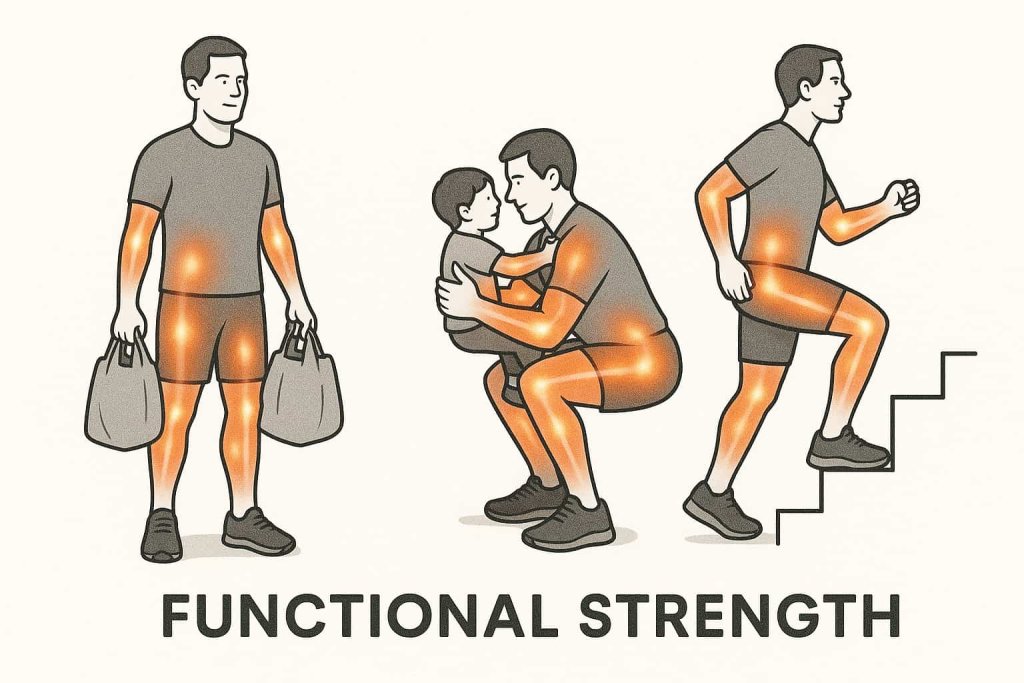
Strength training makes everyday life easier by improving strength, balance, and coordination. Research confirms it enhances functional fitness and reduces the risk of injury in daily activities.
- Supports daily movement → Functional resistance training improves the ability to perform everyday tasks such as climbing stairs, standing from a chair, or lifting objects (European Review of Aging and Physical Activity, 2014).
- Reduces injury risk → By strengthening muscles and joints, functional training lowers the chance of falls and common musculoskeletal injuries (Medical News Today, 2023).
- Promotes independence with age → Strength training helps older adults maintain autonomy and mobility, keeping them active and self-sufficient.
👉 It’s not about looking like a bodybuilder—it’s about moving through life with ease and confidence.
3. Boosts Metabolism and Aids Fat Loss
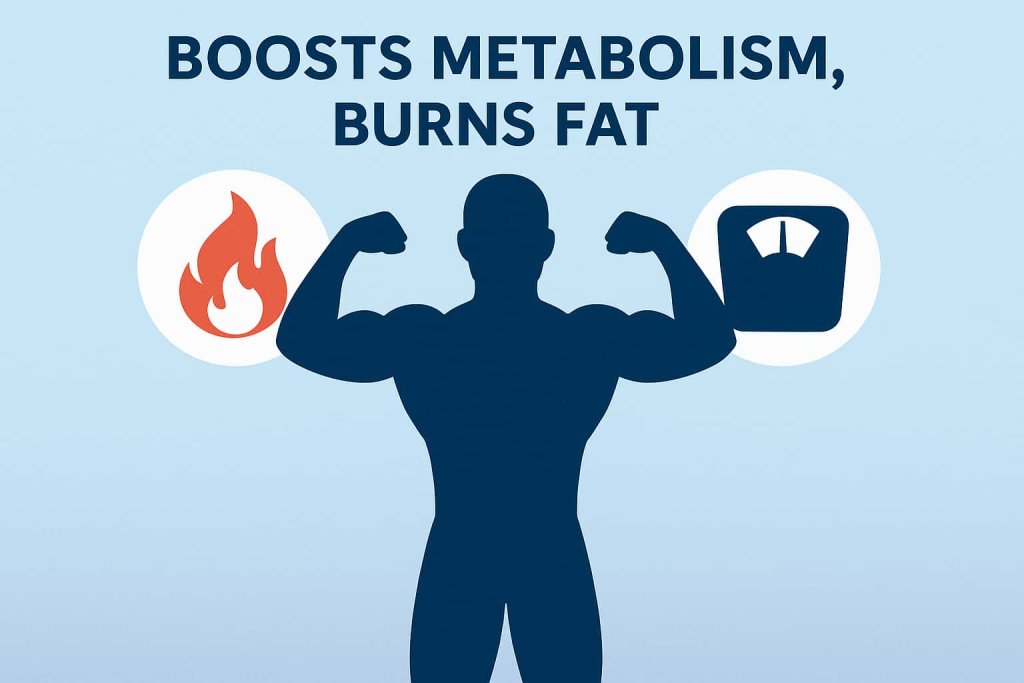
Unlike cardio, strength training builds lean muscle that burns calories even at rest.
- Each pound of muscle burns 7–10 more calories per day compared to fat tissue.
- “Research shows resistance training can increase resting metabolic rate (RMR) for up to 72 hours after a workout, especially following full-body sessions with eccentric emphasis (Gentil et al., 2006).
- Combining strength training with calorie control leads to faster and more sustainable fat loss.
👉 This is why people who lift weights are more likely to keep weight off long-term compared to those who only do cardio.
4. Improves Posture and Core Stability
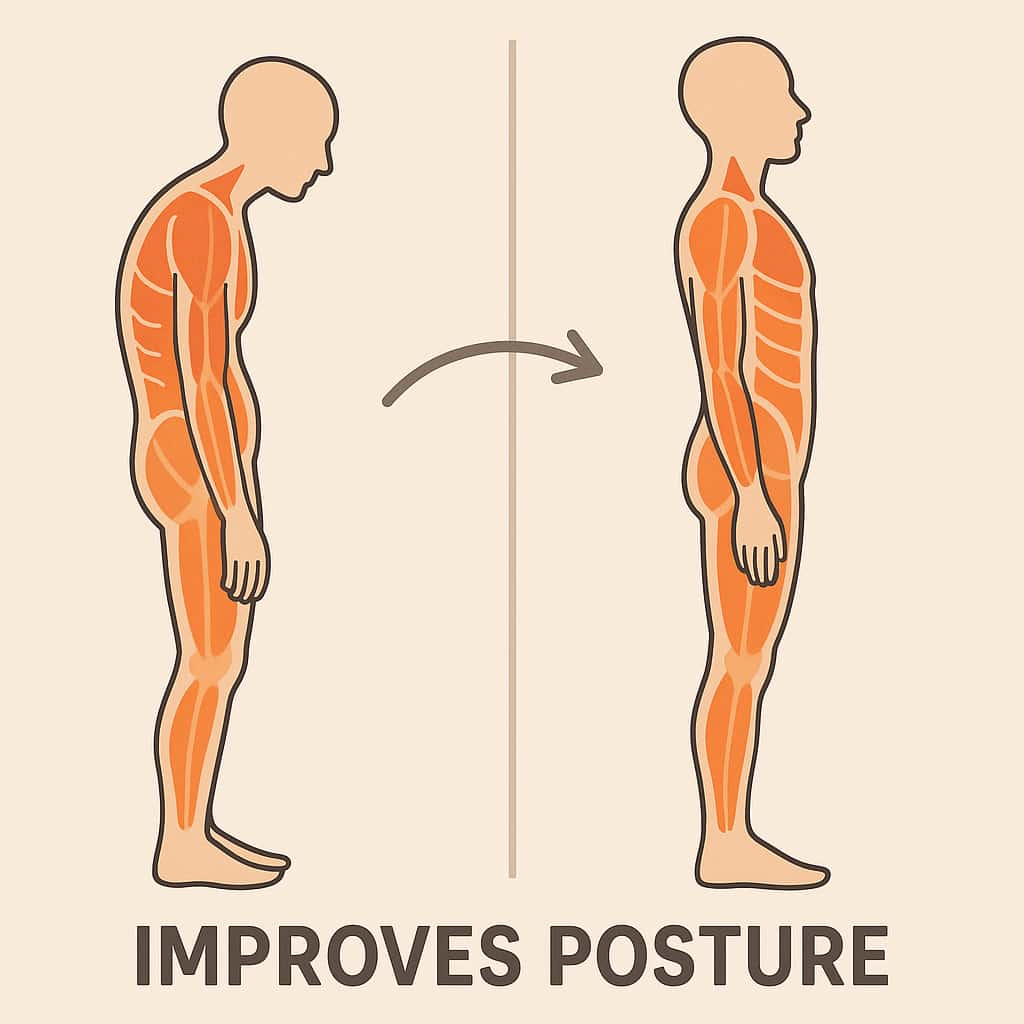
Poor posture causes back pain, neck strain, and reduced mobility. Strength training helps correct this by strengthening postural muscles. Research confirms that strengthening improves posture and muscular balance, while stretching alone shows little effect (Sports Medicine – Open, 2024). Key postural muscles include:
- Core: rectus abdominis, obliques, transverse abdominis
- Spinal stabilizers: erector spinae
- Glutes
- Upper back muscles
👉 Example: Deadlifts and rows build a strong posterior chain that helps you stand taller and reduces lower back discomfort.
5. Strengthens Bones and Reduces Osteoporosis Risk
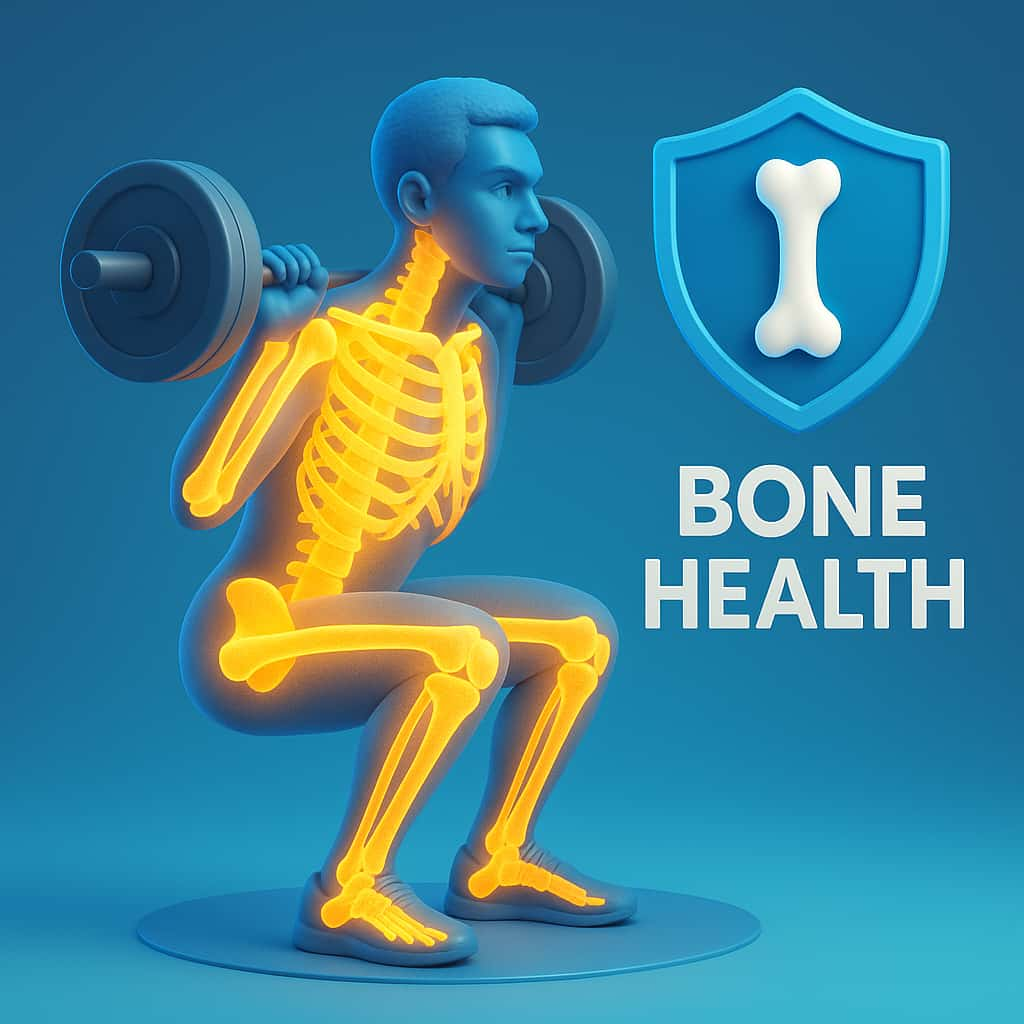
Weight-bearing exercises stimulate osteoblasts, cells that build bone density.
- A 2023 National Osteoporosis Foundation report showed that adults who strength train have 20–40% higher bone density compared to sedentary peers.
- Resistance and weight-bearing training improves bone mineral density, especially in postmenopausal women (Osteoporosis International, 2023).
👉 Squats, lunges, and overhead presses are excellent for bone health (National Osteoporosis Foundation).
6. Enhances Balance and Joint Health
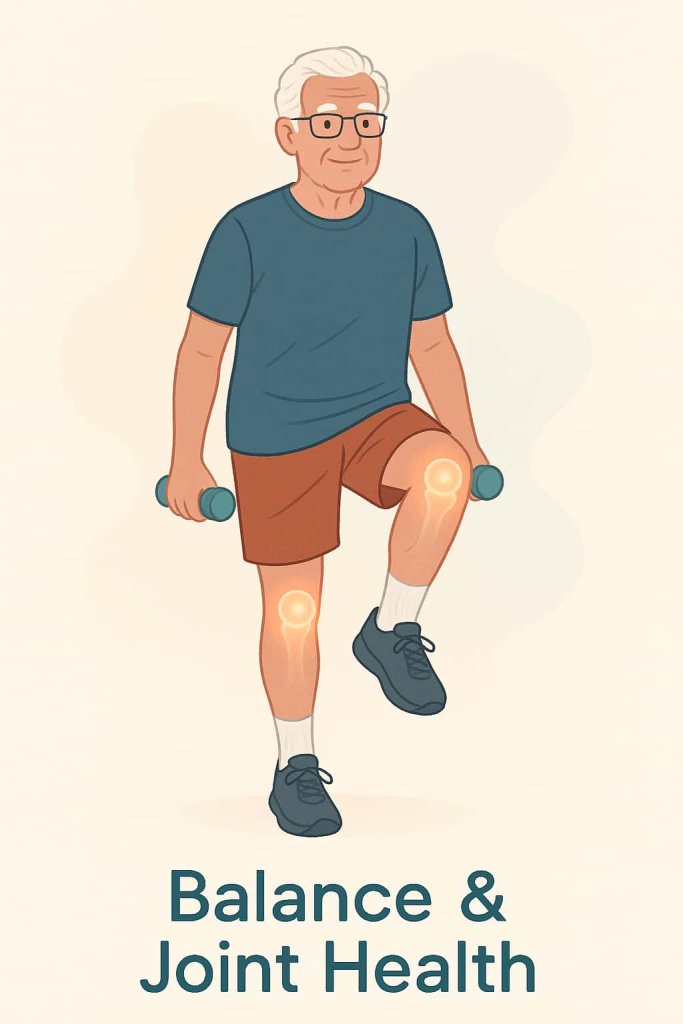
Strength training improves balance by reinforcing muscles, tendons, and ligaments that support your joints.
- Helps prevent falls, the leading cause of injury among seniors.
- Strengthens connective tissue to reduce risk of sprains or tears.
- Improves flexibility when paired with proper stretching.
👉 Research shows that older adults who engage in strength and balance training at least twice per week significantly improve stability and can reduce fall risk by up to 50% (PMC, 2023).
7. Lowers Risk of Chronic Diseases

Strength training isn’t just about muscles—it protects your heart and metabolism.
- Diabetes: Improves insulin sensitivity, lowering blood sugar.
- Heart disease: Reduces blood pressure and LDL cholesterol.
- Obesity: Supports long-term fat loss and weight control.
👉 The American Heart Association recommends adding muscle-strengthening activities, such as resistance training, at least two days per week for cardiovascular and overall health.
8. Supports Longevity and Reduces Premature Mortality
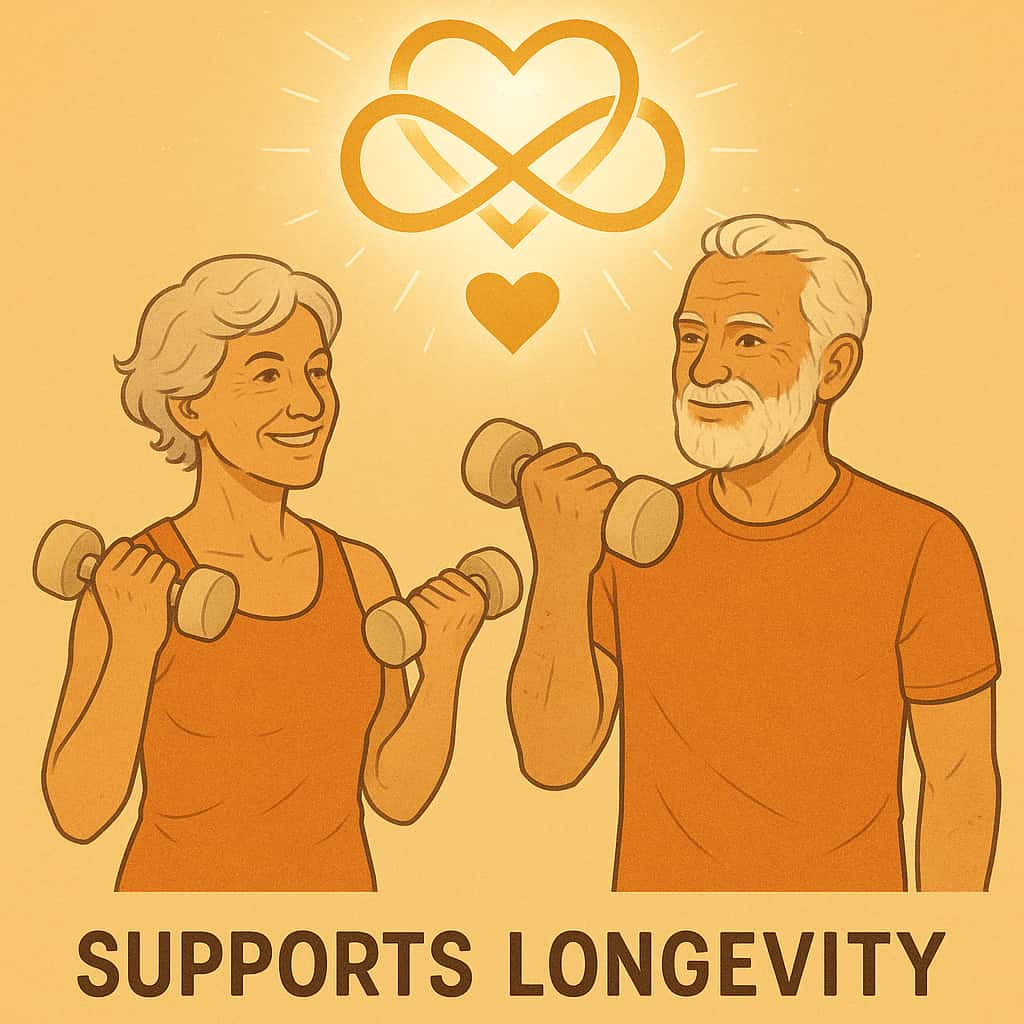
Research shows people who perform strength training live longer.
- A 2022 meta-analysis in the British Journal of Sports Medicine found 10–17% lower risk of premature death among people who lifted weights weekly.
- Resistance exercise reduces deaths from heart disease, cancer, and diabetes.
👉 Strength training literally adds years to your life.
9. Improves Brain Health and Cognitive Function
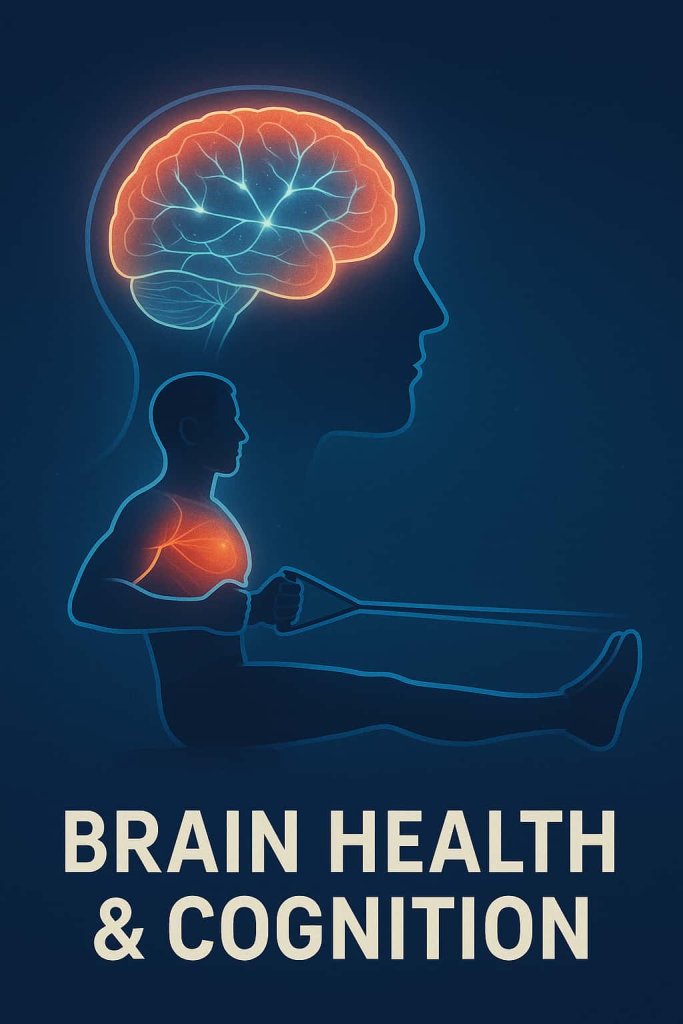
Your muscles and brain are linked through neuroplasticity. Strength training improves:
- Memory and attention (Harvard Health, 2023).
- Cognitive flexibility (ability to learn and adapt).
- Protection against dementia—studies show older adults who lift have sharper mental performance.
👉 Think of resistance exercise as brain training with weights.
10. Elevates Mood and Mental Health

Strength training has powerful psychological benefits:
- Releases endorphins that reduce stress and improve mood.
- Increases confidence by improving body image.
- Helps treat depression and anxiety—confirmed by a JAMA Psychiatry review (2021).
👉 Just two sessions per week can make you feel more energetic, resilient, and motivated.
11. Enhances Physical Performance

Strength training enhances neuromuscular efficiency by improving muscle recruitment, coordination, and rate of force development. Research shows it provides these benefits (MDPI, 2024):
- Boosts explosiveness and speed → helpful for athletes in sports.
- Improves muscle recruitment and coordination → your nervous system becomes more efficient.
- Enhances balance and agility → supports better performance in both training and sports.
- Improves recreational performance → makes hiking, swimming, biking, and daily activities easier.
👉 For example, runners who add squats and lunges to their routine reduce injury rates and improve sprint speed.
12. Supports Immune Health and Reduces Inflammation

Strength training does more than build muscle—it strengthens your immune system. Research shows resistance training helps regulate inflammation by lowering markers such as C-reactive protein (CRP) and interleukin-6 (IL-6).
- Reduces chronic inflammation → Regular strength training lowers systemic inflammation, a key factor in many age-related diseases.
- Boosts immune defense → Improves the body’s ability to fight off illness and infection.
- Enhances recovery and resilience → Consistent resistance exercise supports faster recovery and long-term health (NIH, 2022).
👉 The benefits go beyond fitness—strength training helps you stay healthier, recover faster, and build resilience against disease.
How to Start Strength Training (Beginner Tips)
- Frequency: Train 2–3 days per week.
- Exercises: Start with bodyweight (squats, push-ups, planks) or light weights.
- Progression: Increase resistance gradually (progressive overload).
- Form first: Master technique before adding weight.
- Recovery: Rest at least 48 hours before training the same muscle group.
👉 For safety, consult a trainer or follow beginner programs like the CDC’s resistance training guidelines.
FAQs
1. How many days per week should I lift weights?
2–3 sessions are enough for beginners, according to CDC fitness guidelines.
2. Can strength training replace cardio?
No. Cardio supports endurance and heart health, while strength training builds muscle and bone. Both are important.
3. Will strength training make me bulky?
Not unless you train specifically for hypertrophy with high calorie intake. For most, it creates lean muscle.
4. Is strength training safe for seniors?
Yes, when supervised and progressive. It reduces falls and improves independence.
5. Does lifting help with fat loss?
Yes—muscle boosts metabolism and helps maintain weight loss long-term.
6. How fast will I see results?
Strength increases within 2–4 weeks. Visible muscle changes typically appear after 8–12 weeks.
7. Do I need a gym membership?
Not necessarily. Resistance bands, dumbbells, or bodyweight workouts at home can be just as effective.
Conclusion
Strength training is one of the most powerful health investments you can make. From preventing disease and boosting metabolism to improving mood and adding years to your life, science is clear: resistance training belongs in every fitness routine.
👉 Whether you’re 20 or 70, start small, stay consistent, and build strength for life.
